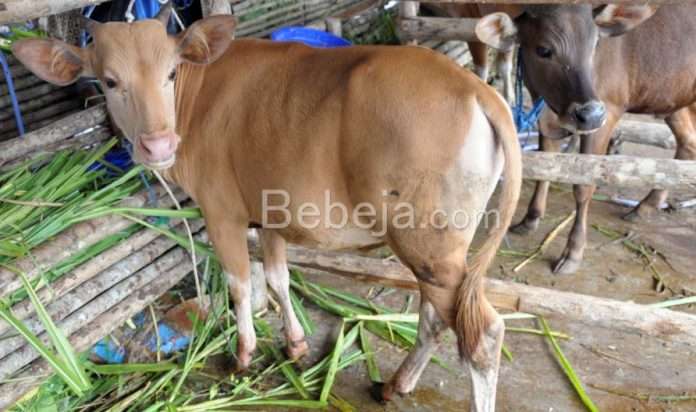Indonesia is the largest buyer of live cattle from Australia. Australian cattle breeders provide a valuable option for cattle feeders. The type of feed that is imported depends largely on the month of import. Brahman cross cattle feeders from northern Australia are preferred from October to April, while limousine and simmental cattle feeders are imported from May to September. The imported cattle for enlargement have an average age of 2-2.5 years and weight of 250-350 kg/head.
The feed used for fattening includes concentrates with a protein content of 19-20%, which are produced by mixing onggok, palm meal, coconut meal, corn flour, and pollard (wheat). Concentrate feed can be combined with 2% forage feed, as well as vitamin and mineral supplements, resulting in a Food Conversion Ratio (FCR) value of 1:8.
Forage consists of grass, leaves, corn stalks, and rice straw. To improve digestion and absorption of cow feed, forage feed is fermented to remove lignin compounds. By combining different feeds, cows can gain weight at a rate of 1.1-1.3 kg per head per day. After 95-100 days of maintenance, cows can weigh between 400-450 kg per head.
Indonesia imports Australian cattle to meet its beef demand. The imported cattle have superior meat quality and productivity, which could enhance the genetic quality of the local cattle through cross-breeding. Since 2012, Australian cattle imports have accounted for 75% of the total imported meat consumption in Indonesia. In 2019, Australia shipped 675,874 head of live cattle to Indonesia. Moreover, in 2022, Indonesia’s cattle imports from Queensland, Australia included 2,000 live cattle for intensive fattening.
Australian imported breeds of cattle, such as brahman cross, result from breeding brahman cattle with other breeds. Brahman cattle, native to India, are characterized by their humped back, sagging neck skin, and large ears. They exhibit high resistance to climate, diseases, and parasites, making them
Suitable for crossbreeding with other breeds to pass on genetic advantages. Limousin cattle are a French breed of beef cattle with a golden-red coat. They have large, long, and dense bodies with well-developed musculature, resulting in high productivity of quality meat. Limousin cattle are frequently crossed with other breeds, creating superior varieties such as limpo cattle (a mix of limousin and ongole) and limura cattle (a combination of limousin and madura).
Simmental cattle is a breed of cattle from Simme, Switzerland. With a reddish coat color featuring shades of white, Simental cows have a large, long, and densely muscled body structure.
